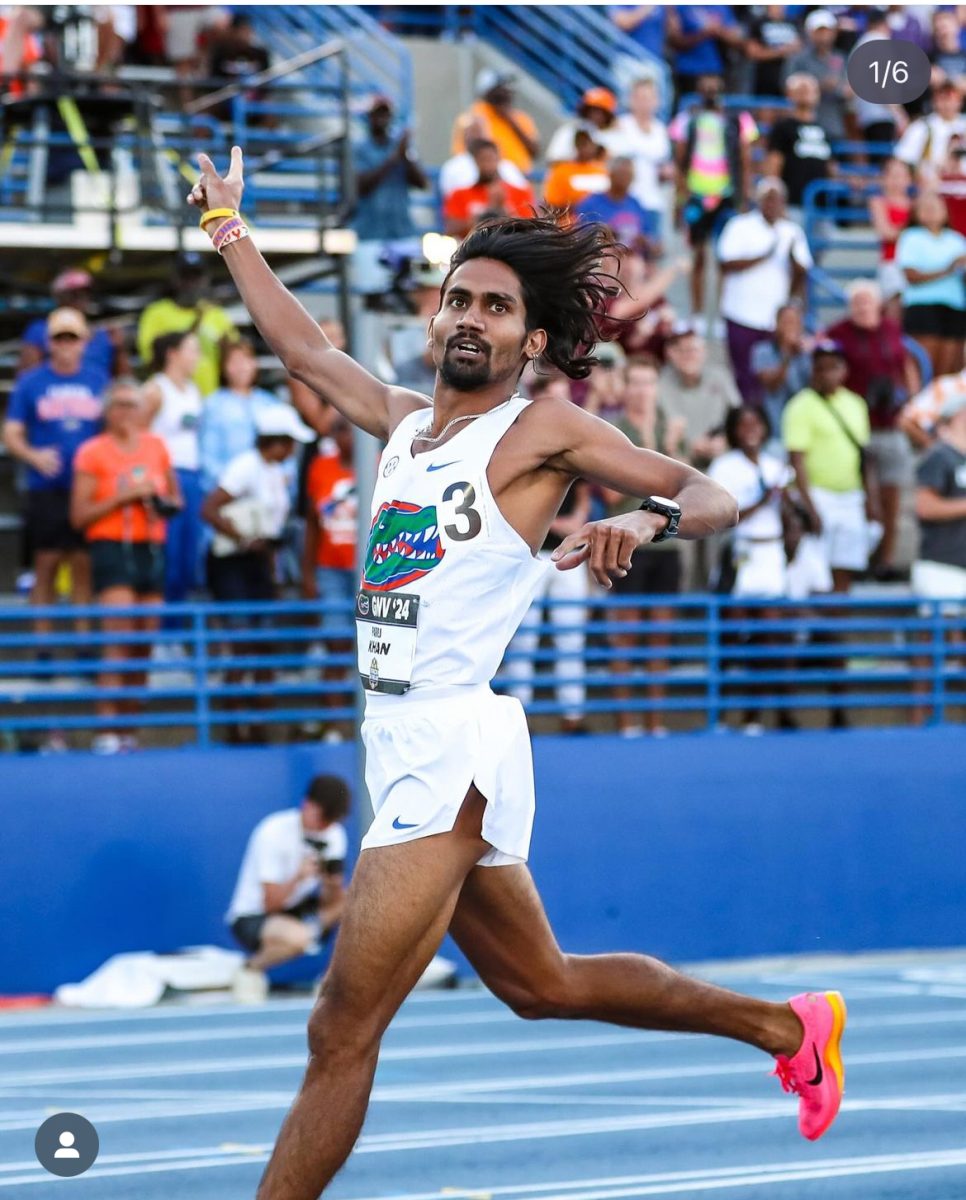True freshman Parvej Khan is one of the best mid-distance runners in the NCAA. The 19-year-old is not only leading the best track and field team in the country at the University of Florida but also making history for Indian athletes everywhere. Growing up on a small farm in a village in Mewat, India, Khan began running for his recruitment into the army. Now, Khan has become the first Indian to compete on the track in an NCAA national championship and holds an Indian national record. With an incredible kick and an iconic finishing move of catching his gold chain in his teeth, he has caught the attention of the running world.
Khan’s ascent to the top of Division 1 running goes against decades of stereotypes that pigeonhole Indians into strictly defined personality types. Indian adults are often lumped into two groups: working in service, as convenience store owners or cab drivers and in STEM as doctors and pharmacists. Indian youth are thought of as bookish, antisocial and stressed by overbearing parents. Rarely though are Indians depicted in the roles many Americans truly value: sports stars, musicians and celebrities—the professions that kids dream about.
My father was a baseball player turned distance runner at a time when nobody understood why a scrappy Indian kid would be wasting his time playing sports. While it didn’t dissuade him from pursuing the things he loved, it certainly made his path challenging. Stereotypes cause many kids to steer clear of activities that they don’t think they will fit into or even that they don’t believe they can be good at. Pervasive stereotypes become self-fulfilling in this way, arguing that a group isn’t talented and then preventing them from developing those talents and depriving children of role models they can identify with. Stereotypes don’t change out of kindness, they change when people defy them so egregiously that they lose all credibility. Khan’s success is proof by counterexample that Indians can be athletes.
Moreover, Khan’s success is inspiring to Indian runners everywhere. Watching someone who looks like us achieve such grand athletic accomplishments raises the ceiling for what we believe we are capable of. Representation in sports not only shows the world what we are capable of but also shows us that we are not limited.
However, Khan is far from the first top athlete to come from India. Javelin thrower Neeraj Chopra is the reigning world and Olympic champion. Tejaswin Shankar placed first in the high jump at NCAAs in 2018, his first season and India’s 4×400 relay defied everyone’s expectations placing fifth at Worlds last year.
For many years India lagged in athletic competition. The many sports played in the United States aren’t valued the same way in India. People in the United States train to play sports from a young age because there is a reward at the top—scholarship money, brand deals and fame. For the sports that are valued in India, and rewarded in that same way, India tends to excel.
Now, as the athletics systems in India are growing and attitudes toward sport are changing, India is performing just as well as anyone else on the global stage. It was always a matter of opportunity for Indian athletes, never biological potential. So keep an eye out for the next generation of Indian athletes.


Aidan Alvarez • Oct 6, 2024 at 12:02 am
Beautiful article Tage, the quote you produced “Stereotypes don’t change out of kindness, they change when people defy them so egregiously that they lose all credibility.” is sure to be hung up on a wall someplace in the next few years.
I see great potential in your advancement in life. Best of luck!